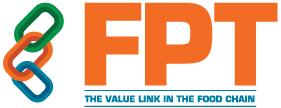FRENCH FRY MACHINE
To make French Fries, the French fry Machine cut the potato into uniform strips, then wipes off or soaks it in cold water to remove the surface starch before drying thoroughly. Then, in one or two phases, they might be fried.
Freshly dug potatoes often have too much water in them, resulting in sloppy fries, so choose those that have been kept for a while. The first bath, also known as blanching, is in heated fat (about 160 °C / 320 °F) to cook them thoroughly in the two-stage or two-bath procedure.
This step can be completed ahead of time. The exterior is then crisped by a frying machine briefly in extremely hot oil. They're then drained, salted, and served in a colander or on a towel. The length of time spent in each bath is determined by the size of the potatoes.
The first treatment of the French fry machine, for example, takes roughly 3 minutes for 2–3 mm strips, whereas the second bath takes only seconds. There are various ways to prepare French Fries. Deep frying involves immersing food in a heated fat, usually oil. Vacuum fryers are ideal for processing low-quality potatoes with greater sugar levels than usual, which are typically processed in the spring and early summer before the fresh harvest arrives.
Changes in chemical and physical properties
French Fries are fried in two stages by a French fry Machine, first, the starch is cooked throughout the cut at a low temperature, and then the golden crispy outer of the fry is created at a higher temperature.
This is important because if the potato slices are only fried once, the temperature will either be too high, resulting in only the exterior being cooked and not the interior, or it will be too low, resulting in the entire fry being cooked but with no crispy exterior. Despite the fact that the potato slices can be baked or steamed, this section will only cover French Fries produced with frying oil.
Water on the top of the cuts evaporates during the first frying phase (about 150 °C), and the water inside the cuts is absorbed by the starch granules, causing them to expand and generate the fluffy interior of the fry. Due to gelatinization, the starch granules are able to hold water and expand.
Water and heat disrupt the glycosidic connections between amylopectin and amylose strands, allowing for the formation of a new gel matrix via hydrogen bonds that help in water retention. The fluffy interior of the fry is due to moisture trapped between the gel matrix and the fry.
The residual water on the surface of the slices will evaporate during the second frying phase (about 180 °C), and the gelatinized starch molecules that have accumulated on the potato surface will be fried again, generating a crispy exterior. When the amino acids and glucose on the outside of the fry join in a Maillard browning reaction, the golden-brown hue develops.
QUALITY ASPECTS OF French fry Machine
Appearance
Before during, and after the procedure, the French fry Machine's appearance is reviewed, and faults are undesirable. Defects can develop in the raw material or as a result of the manufacturing process. Diseases, green discoloration owing to solanine development, and blue discoloration due to bruises are examples of raw material flaws.
These flaws are typically discovered after a visual inspection following washing or cutting. During steam peeling, the outer surface, right beneath the skin, is overdone, resulting in a noticeable heat ring. 18 After parfrying, this results in a frothy surface. Shattering and feathering owing to insufficient cutting, as well as blistering due to excessive pre-drying, are examples of faults that can occur during processing. 30 Only a limited number of slivers, nubbins, and broken pieces are acceptable, thus long, uniform strips are preferred.
Texture
The texture is regarded as one of the most essential components of French Fries' excellence. There is a clear distinction between the inside and outside: the interior must be soft and mealy, but the exterior must be firm. A crunchy crust covers the outside. The crust is generated during the frying process and usually has a crunchy texture. Approximately 1 mm thick.
Vacuum space accounts for around 80% of the crust's volume. The Cooked and somewhat dried cells with a texture comparable to cooked cells make up the inside potato. Potato tissue softens when heated owing to the breakdown of cell wall polysaccharides. At roughly 68°C, starch gelatinization happens fast, however, this is less significant for texture.
FLAVOR
The importance of taste is self-evident. After all, the majority of the eating experience is based on flavor. However, it's vital to use nice, clean fry oil and high-quality potatoes. The oil adds a lot to the overall enjoyment of eating French Fries.
Oil Quality Oil Uptake
The frying oil is degraded by oxygen, light, high temperatures, and water from the product. Oxidation, hydrolysis, and polymerization are the three types of degradation processes. Darkening, greater viscosity, lowered smoke point, and enhanced foaming is some of the apparent changes that occur during frying.
Furthermore, oxidation produces volatile chemicals, which promote rancidity. This is significant since the quality of the food produced is influenced by oil. Fresh oil, on the other hand, does not produce excellent frying results: the items are undercooked and lack color and flavor.
Industrial French fry Machine and Waste Problem
The French fry machine line generates a substantial volume of solid trash. As a result, it's not unexpected that waste treatment expenses might eat into a highly competitive industry's profit margin. Before transferring the effluent to municipal or private waste treatment facilities, most businesses remove particles from the waste stream. Solid garbage is either taken to a landfill or disposed of in a landfill. Some processed potato products include Potato chips, Frozen Industrial French Fries, Dried diced potatoes, Potato Granules, Potato flakes, and Potato starch.
The following procedures are used: Storing, Peeling, Slicing, Sorting, Washing, Cooking, Transporting, and so on.
Our Principals
Rosenqvists Food Technologies AB started in 2009 when a group of experts with long experience and background in the development and design of processing lines for the potato processing and snack food industries joined Rosenqvists. Kiron Food Processing Technologies’ focus is on processing lines for Industrial French Fries and the snack food industry. (Complete french fries lines for potato chips and frying systems for pellets, prefabricated chips, peanuts, batch fried chips, tortillas, wet pasta, etc.









